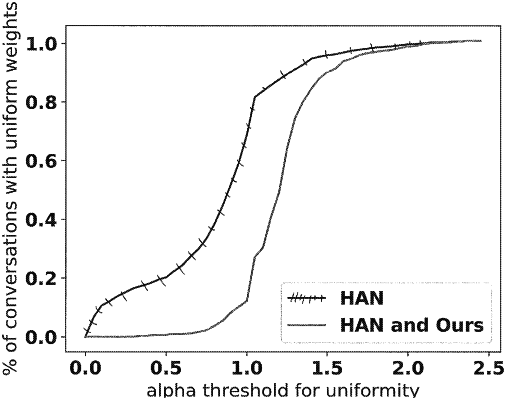| CPC G06F 40/117 (2020.01) [G06F 40/35 (2020.01)] | 13 Claims |

|
1. A computerized method for highlighting relative importance of portions of a conversation displayed on a graphical user interface, comprising:
storing the conversation in computerized memory connected to a computer processor that is configured to display conversation text on a graphical user interface, wherein a display of the conversation illustrates conversation data according to respective conversation participants' turns in providing conversation input;
weighting respective turns of the conversation by providing the conversation input of the respective turns to a hierarchical attention network stored in the memory, wherein the hierarchical attention network uses the processor to calculate sequential long-short-term-memory cells (LSTM) in the memory;
using later LSTM cell data to update weighting values for prior LSTM cell data in a sequence of turns of the conversation input;
wherein weighting the respective turns comprises adding conversation input data from additional later turns of the conversation to new LSTM cells; and
wherein the hierarchical attention network uses the computer processor to calculate sequential long-short-term-memory cells (LSTM) in the memory when a prior weighting of turns in the conversation have had a degree of uniformity greater than a uniformity tolerance threshold.
|